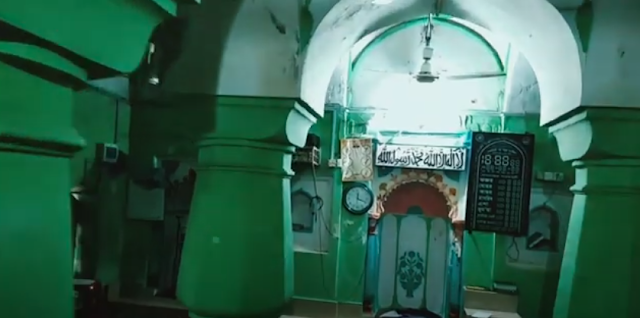Assalamu Alaikum. السلام عليكم.
Imagine walking through a lush, verdant landscape, only to stumble upon a hidden treasure. Get ready to embark on a visual and cultural journey that not only showcases the breathtaking beauty of Laldighi Mosque in Rangpur, Bangladesh, but also immerses you in its rich history and spiritual significance. Dating back to the Mughal period, the Laldighi Mosque, also known as the "Red Mosque," derives its name from the adjacent pond, "Lal Dighi," meaning "Red Pond." The mosque's strategic location near the pond enhances its beauty, creating a picturesque setting that captivates visitors.
The mosque's architecture reflects a blend of Mughal and local influences, showcasing intricate designs and exquisite craftsmanship. The mosque's walls are adorned with terracotta decorations, while the interior is embellished with calligraphy and floral motifs, adding to its aesthetic appeal.
Welcome, fellow wanderers! This blog will explore the mosque's historical background, its architectural grandeur, and the vibrant culture of the local people, all while providing a comprehensive tour plan that ensures an unforgettable journey.
History:
The Laldighi Mosque's rediscovery occurred during the British colonial period in the Indian subcontinent. Following a period of restoration and cleaning efforts undertaken by the local community, the mosque was once again brought into active use. While no inscription marking its precise construction date was found during its rediscovery, local tradition attributes its founding to a figure named Dilwar Khan. Evidence suggests that an inscription detailing the mosque's name and construction was likely once present above the main entrance, though this has since been lost.
Architecture and Infrastructure:
The Laldighi Mosque is elevated on a platform, or plinth, approximately one meter high. This raised platform extends beyond the mosque's footprint; it is believed the outer portion was historically used for the call to prayer (Adhan). A prominent entrance graces the front of the mosque, with a staircase providing access from the mosque level to the outer platform. Constructed using traditional brick and mortar, the mosque is situated near a small pond featuring a ghat (stepped embankment).
The mosque's design features nine domes and a square layout with sides measuring 9.45 meters. Nine entrances provide access to the interior: three each on the north, east, and south facades. The central entrance on each of these sides is notably larger than the flanking entrances. The west wall, which faces Mecca, incorporates three arched recesses, with the central arch similarly distinguished by its greater size.
It is believed to have been commissioned by a nobleman as a symbol of devotion. The mosque's strategic location near Laldighi Lake adds to its serene charm, making it a prominent gathering spot for locals and travelers alike.
Tour Guide:
By Air:
The nearest airport is in Dhaka. From there, you can take a domestic flight to Rangpur.
By Train/Bus:
Several trains and buses connect Dhaka to Rangpur, making travel convenient and affordable.
Best Time to Visit:
Throughout the year. For a more serene experience, consider visiting outside of peak prayer times.
Dress Code:
Modest attire is recommended. Women should cover their heads and wear loose-fitting clothing. Men should wear long pants and shirts.
Respectful Conduct:
Maintain a quiet and respectful demeanor within the mosque premises.
Local Etiquette:
Be mindful of local customs and traditions. Seek permission before taking photographs of people.


%20(1).jpg)







.png)




0 Comments